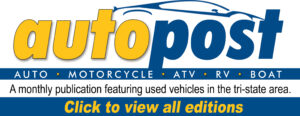Last week the West Virginia Academy, the state’s first brick-and-mortar charter school, announced plans to expand its Morgantown campus to Preston County.
The new addition, its board of directors said, is owed to popularity of the academy, which will go into fall at near capacity in its main building on Chestnut Ridge Road.
With the charter just wrapping up its inaugural year of classes, the growth reflects the new reality of education in the Mountain State.
At the same time of the academy’s announcement, the Center for Research on Educational Outcomes, housed at Stanford University, was making an announcement of its own that reflects the reality of charter schools everywhere else.
And that’s the news that charters are now catching up with the nation’s public schools while outperforming them in some areas.
The most recent study takes a five-year pre-pandemic swath from 2014 to 2019.
More than 6,000 charter schools across 29 states were tracked in the study made notable by gains that weren’t there in two previous studies.
The center has chronicled charter school outcomes since 2000. Up until the 2019 study, charters traditionally fell short in most academic areas.
How they did — this time
Learning in the charters, in this most recent study, was more intensive.
The findings were reported in Education Week, a trade publication for teachers.
Classroom teaching time in the charters, according to Education Week and the study’s facilitators, came out to the equivalent of 16 more days of instruction in reading over other public schools on average.
Add another six days garnered in math for the same, in terms of teachers in front of a classroom, as reported.
While the center’s study was done before the pandemic hit, West Virginia public schools and other public districts nationwide reported record-low scores in reading and math last year, which education officials attributed directly to COVID.
Charter school proponents, meanwhile, said those schools, pandemic or no, were already flagging in those two subjects.
Reading and math were also the benchmarks of the center’s most recent study, with 83% of charter school students keeping even or doing better in reading with their public-school counterparts.
Math scores showed 75% of charter schools either maintaining or turning higher test schools than public schools.
What didn’t work
In contrast, public schools, according the research, did considerably better in educating students with disabilities opposed to charter schools.
Online charter schools were also low overall on the curve, with the equivalent of 58 learning days lost in reading and 124 for math instruction, compared with traditional public schools.
That data squares with Andrew Saultz’s professional opinion of such online enterprises.
He’s a professor and researcher at Pacific University in Oregon who studies equity and accountability issues in public schools and charter schools across the nation.
Online charters, he told The Dominion Post previously, should be viewed with caution.
In 2018, what had been the largest virtual charter school in Ohio went dark – causing some 12,000 students to be set adrift, just like that, he said.
Giving an A (for accountability)
Saultz, who is a former high school social studies teacher and elected school board member, said parents wishing to enroll their child in a charter school – or those considering a school of their own – need to remember that benchmarks are there for a reason.
That’s even with charters being hailed for sometimes unconventional approaches to classes and learning, he said.
“You still need to have measures and standards in place,” he said. “It’s still about accountability.”
John Treu, the West Virginia Academy board chairman who announced his school’s expansion last week, said it’s also about accessibility and choice for the Mountain State’s pioneering charter school.
“This is the first time many parents and families have ever meaningful choice in public education,” he said.
TWEET @DominionPostWV



